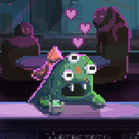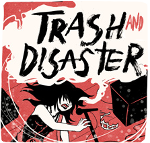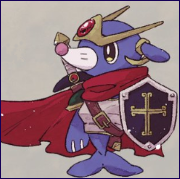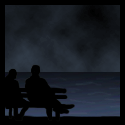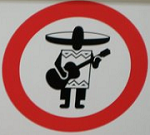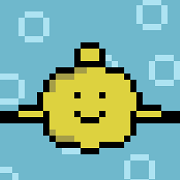|
I should make clear that I know about injection molding and some kinds of manufacturing but nothing about board game manufacturing specifically - it was late and I was anxious to write up what I knew; I was lazy and skipped the part about what I didn't and shouldn't have done that. Panda may very well have some options for smaller quantity miniatures production. The stuff I detailed applies for from scratch products and production which I'm sure doesn't account for at least some of the things a game production company can bring to the table. e: Shapeways 3D prints on their high end stuff and mails you the results. You're buying physical prints of the models on their site (or supplying your own models.) Another option for minis is casting; you can get really good results with careful work, but of course it's still a skill that requires practice - it's just one suited to small quantities and basement/desktop work. The Eyes Have It fucked around with this message at 04:36 on Apr 25, 2016 |
|
|
|

|
| # ? May 23, 2024 15:12 |
|
For anyone following Meltwater (which I imagine is just Sinewave), the test rules have been updated to version 0.4. Version change notes and revised player aid cards are here. EDIT: Also, here is my testing metrics chart, if you want to see what I'm currently looking for in test results. If you want to playtest the game, please feel free to log your play in a new column on the sheet. Also, I'm interested in ideas for other metrics to track! gutterdaughter fucked around with this message at 08:15 on Apr 25, 2016 |
|
|
|
Looked at the new Dark Souls boardgame video, and I'm a little unsure about the way it's looking: https://www.youtube.com/watch?v=bOM3OCAQMP8 Is it just me or does the combat in this seem way too random? I was going to comment on the score card tracking of stamina but I'm sure it'll switch to some sort of chit eventually so I'll leave that alone. I was excited to see a stamina management mechanic, but this seems more like a push your luck mechanic rotating around health? What do you think?
|
|
|
|
Looking forward to trying this out once I locate some pieces   Quick questions for Starvation / unit limits: 0. Can you confirm whether supply depots are considered units for purposes of hex unit limits / determining Starvation? The rules imply they are since they refer to removing supply depots during the resettling phase (they can't move/flee as a result of starvation so if they must move they are removed instead.) 1. Hex unit limits / determining Starvation status in the starvation phase: Rules say "A dirty snow hex (white) can normally support ONE piece" (or TWO for x, THREE for y, etc) but the sidebar implies the scope of this phase does not include the enemy. Does this mean a dirty snow hex supports one friendly or one neutral unit (and all enemy units are ignored)? Or up to one friendly and up to one neutral (and all enemy units are ignored)? 2. The rules say that if there are too many units in a hex, those units are Starving. Do they cease Starving as soon as the hex is at or under its "capacity"? (Or is the Starvation attribute 'sticky' and only goes away once they move i.e. all Starving units must vacate the hex if possible?) Clarifications: THREATEN, PRESSGANG, and RAID: the acting unit cannot be adjacent to a hex with enemies. So no restrictions on the target hex? (i.e. the target hex can be adjacent to enemies so long as YOUR acting hex is not adjacent to enemies. Being next to enemies "pins" you in other words but otherwise does not affect you or who you target.) MILITARIZE / TAKE UP ARMS: Can the "up to two" friendly civilians be in any hex? Can the two be in two different hexes (one in each)? PRESSGANG action: rules say "if you have an armament in your hex [...]" I assume this wording should be same as THREATEN, i.e. "if you have a soldier in your hex [...]" Probably some of these would become self-evident when we sit down to play but I'm trying to get them straight in my head.
|
|
|
|
Harvey Mantaco posted:Looked at the new Dark Souls boardgame video, and I'm a little unsure about the way it's looking:
|
|
|
|
I made a tabletop simulator version of our game, We Stand Alone I've always found Tabletop Simulator pretty clunky to use but thankfully for a fairly component-light game like this it seems to work fairly well. More so than when I tried playing Terra Mystica at any rate!
|
|
|
|
Mister Sinewave posted:Looking forward to trying this out once I locate some pieces You can't hear it through the internet, but i just made a high-pitched excited dog noise. quote:Quick questions for Starvation / unit limits: Yes, supply depots are units. Will clarify in next revision. quote:1. Hex unit limits / determining Starvation status in the starvation phase: Rules say "A dirty snow hex (white) can normally support ONE piece" (or TWO for x, THREE for y, etc) but the sidebar implies the scope of this phase does not include the enemy. Does this mean a dirty snow hex supports one friendly or one neutral unit (and all enemy units are ignored)? Or up to one friendly and up to one neutral (and all enemy units are ignored)? Each hex supports X units total, between player pieces and neutrals. Enemies and friendlies can never co-occupy the same hex for any reason (cf. "Ownership and Loyalty" and "Action - Move"), so that's not a case you need to worry about. quote:2. The rules say that if there are too many units in a hex, those units are Starving. Do they cease Starving as soon as the hex is at or under its "capacity"? (Or is the Starvation attribute 'sticky' and only goes away once they move i.e. all Starving units must vacate the hex if possible?) The first one. Starvation is handled one piece at a time, and pieces stop starving as soon as the excess is dealt with. quote:Clarifications: Correct on all counts. And specifically, only enemy Soliders adjacent to your performing hex block Threaten/Pressgang/Raid. (Basically, your forces are a bit distracted by the angry men pointing guns at them, and can't engage in other operations until that's tidied up.) "Armaments" were a holdover from a previous version of the game, and I've fixed it now. gutterdaughter fucked around with this message at 05:44 on Apr 27, 2016 |
|
|
|
SynthOrange posted:Nice! Maybe theme it up a bit more though? A spaceship in space can be a little bit generic. If it's a space parcel delivery game, why not make the box look like a space parcel with weird alien customs stamps, declarations etc? Next version, to be sure, but we ran out of time before having to submit it for a contest. The original sketchup had crew and space pirates outside and IOUs on the dash and a dog in a Geordie Laforge visor and a giant mantis with a clipboard.
|
|
|
|
If anyone was looking for fuckloads of resource tokens for cheap, I came across something almost perfect: Cube beads! Come in a bunch of colors, fairly attractive, available in 6mm cube sizes which is pretty much resource cube sized, and priced at a few dollars for about a hundred or so on ebay or whatever. Yeah sure they're drilled but they're easily available and ridiculously cheap.
|
|
|
|
SynthOrange posted:If anyone was looking for fuckloads of resource tokens for cheap, I came across something almost perfect: What a great idea! This is genius. When I finally get round to sketching out my idea for a game, I'm going to buy about 100 of these in 6mm or 8mm.
|
|
|
|
Yeah I'm quite pleased with this, they also come in a ridiculous range of colors and materials    As for undrilled acrylic chips, I've found 'wedding decoration confetti' that's 6 - 18mm but only come in diamond shapes for smaller sizes.  The larger 3/4 inch sized raw chunks   4-8mm sized diamonds. Full range of acrylic colors, but very restricted shapes. Undrilled though, and as they're made as bulk decoratives for some reason, they're priced at stupid rates like 5000 6mm pieces for $5.
|
|
|
|
Foolster41 posted:So basically I need to plan for an initial run of 10,000 copies, instead of 1,500 meaning my KS goal's going to be about 666x ( You could make the minis out of ceramic or lead, those are much easier to do small runs.
|
|
|
|
SynthOrange posted:If anyone was looking for fuckloads of resource tokens for cheap, I came across something almost perfect: These are great, I use them for my Irish Potato Famine Agricola clone. You can get them at the dollar store craft section.
|
|
|
|
So having largely finished our 2-4 player co-op board game my wife and I are now playing with the idea of trying to create a legacy style board game as something different to do, and because I think the idea of a legacy-style euro game could be awesome. Here's what we've been considering so far. - The game is space-themed. Two major powers are in a 'cold-war' kinda state with each other (something like Earth and Mars in Leviathan Wakes) with players acting as minor independent factions that are trying to develop and grow - The game is basically worker placement combined with contract-fulfilment, along the lines of Lords of Waterdeep or similar. Players create resource engines that they use to create different kinds of spaceship tokens (basically a secondary resource) such as warships, diplomatic vessels, freighters etc. They then trade these ship tokens in to complete missions which reward victory points etc. Standard worker placement fare The legacy ideas we had: - Initially, there are only a handful of action spaces available that grant resources, points etc. The standard objective of the game is to settle a new planet. When a player settles a planet, the game ends and that player gets to name the planet and also choose whether to (for example) strip-mine it, establish a colony on it or various other options. Each planet has three pre-determined options for turning it into a new action space, and the player who colonises it chooses what type of action space it will become, and it is then permanently available for future games - To settle a planet, players need 'favour' tokens. During the game, players earn points for completing missions, and at certain break points (e.g. when they hit 10 points, then 25) players gain a 'favour' token. So basically it's a standard euro game that ends when a player has earned enough points to settle a planet. However, the player that settles the planet must use their favour points to do so, meaning all other players have favour points left over at the end of the game. These can be used to buy game end upgrades, which would include things like creating personal action spaces (which exist on the player's own board and can be used by other players by paying the owning player a cost). Similarly, a settled planet action space can be used by other players by paying the player who initially settled it a small cost - As the game goes on, the cold war turns into all out war between the two major powers. Each of these major powers is represented by (for example) three action spaces. Once the major powers go to war, each player has to permanently align themselves with one of the two powers, meaning they are then permanently locked out of the action spaces belonging to the other faction. From this point on, players are also able to spend end-game favour points to gain permanent loyalty points with their chosen faction, which give various bonuses etc at various stages - Other game end upgrades (or possibly the results of mission) would also enable players to permanently change the action spaces on the board by making them give more or fewer resources, might allow players to start subsequent games with initial resources, extra workers as well as buying new action spaces on their own personal board (which would generally be weaker than the action spaces available on the main board, but always available). In extreme examples (or as a result of certain points in the legacy campaign) certain action spaces could even be permanently destroyed. - Further into the game, there could be an external threat introduced (an alien species etc) which might also substantially change the game's general objective from settling a new planet to somehow dealing with this new threat. Haven't really worked this out beyond just a rough idea - but the latter third of the game could basically come down to all players working together to try and mitigate this threat whilst still competing to be the 'winner' of each individual game. We also liked the idea that maybe the action spaces on the major faction worlds give much better resources than the other action spaces (which might represent nearby trading stations etc) but take time to resolve, to represent goods etc. being shipped a long way from the home worlds. So for example, there might be three spaces for workers below the action spaces on the major faction worlds, and when you play there you place in the left most space, then move one to the right on each subsequent turn until your worker drops off and you get the reward. So players would have to also choose between getting immediate small boosts in resources and much larger rewards that they have to wait for. Anyway, curious to hear any thoughts about the idea, other mechanics that might be interesting in a worker placement legacy game - and also if anyone might be interested in collaborating on a project like this.
|
|
|
|
Yo, design thread! Meltwater has reached a stability point I'm comfortable with, and I think it's time for some larger guided tests. To that end, I would like to open a handful of Play-by-Post games, here on SA, for the purpose of road-testing the latest build! Each game will need two players, and I think I can handle running three side-by-side games at once. So I'll take the first six players who are interested. Please post below if you want in, and please specify US, USSR, or no preference.
|
|
|
|
I'm in, no preference for side.
|
|
|
|
I'd like to give this a shot. No preference for side either.
|
|
|
|
Yeah I'm up for this! Got some relatively quiet times ahead at work so count me in. No preference for side either.
|
|
|
|
So here are some rules. Hopefully they make sense and give an idea of game flow. I'd appreciate any feedback. Essentia Tactics posted:Each player chooses a class in secret. Players simultaneously reveal their choice. If the same class is selected, that class is banned and players select a new, non-banned, class. Repeat this process until player's choose distinct classes or all classes are banned. If all classes become banned, un-ban all classes and start from the beginning. The game is themed as a fantasy arena combat game. To survive, and win, you'll need to mix bluffing and resource management. However your opponent can deny, or even outright steal, your resources if you don't stop them. If that sounds interesting to anyone I can post (some of) the classes to give more of an idea of how the game plays. This doesn't quite look up my alley, but still seems really interesting. I'll probably be following along the play-by-posts out of curiosity to see how the game plays!
|
|
|
|
Gutter Owl posted:Yo, design thread! Meltwater has reached a stability point I'm comfortable with, and I think it's time for some larger guided tests. I'll try it - any side.
|
|
|
|
MELTWATER playtest threads are up! Sorry for the wait, setting up the backend took more time than I estimated. Sinewave vs Tricky theroachman vs rchandra Players, please remember to bookmark your thread.
|
|
|
|
I've been thinking about a resource-drafting semi-cooperative game for a while, and have been kicking around some ideas. I've only got ideas and the minimally playable game right now (and I'm using Zombies as a default us vs. them enemy, which may change); which look like this: quote:
Given the minimally valid 1-player set-up, it's possible to survive 10 or fewer zombies, and you will die to 11 (there are 20 spawn possibilities, so that's almost exactly where I want the game to be for now). I'm now looking into making the game (actually) fun, and adding some interesting features. My plan for semi-cooperative gameplay is that some cards increase the strength or range of an attack, or fix the walls, as well as weapons. Score is the sum of the walls around you, plus any points you get from your weapon efficiency. Weapons will have a "par" on them (quick idea is Shotgun (par 3) -- fires two rounds that each hit one square, and one next to it), where reaching par gets you 0, going over gives you points per extra kill, and going under loses you points per missed opportunity. This is inspired by the World War Z RKR (resource-kill ratio), as efficiency in equipment usage is more important than number killed in a survival situation. Though a breach gets everyone killed, so efficiency is still second to survival. I'm (obviously) also thinking of having some zombies that are faster, or hit harder, or are harder to kill than the 1-move, 1-attack, 1-defense default guys I've got currently. Maybe a big bastard that explodes and kills all the neighbouring zombies, but takes a huge amount of damage to kill. Or a jumping one that makes checkers-like moves where possible. Would anyone play this? Is it just exactly the same as another game I don't know about?
|
|
|
|
If I'm understanding your current set up, it seems mostly like a proof of concept to make sure the system works? If that's the case, its good to know I'm not the only person who designs that way. It seems there isn't yet much player choice, but I can see the places where you've made it so that you can add more meaningful decisions for players down the road (varied items/player powers). How has testing what you have worked out? Are you more interested in testing with more players or more choices? Unrelated Edit So I have a question that I'm probably worrying about way, way more than I should. Is it reasonable to worry about playtesters expecting compensation for their feedback? Is this a legitimate legal worry? Should I take steps to prevent it? What steps? Anniversary fucked around with this message at 00:02 on May 21, 2016 |
|
|
|
Anniversary posted:So here are some rules. Hopefully they make sense and give an idea of game flow. I'd appreciate any feedback. I'm intrigued, but I'm worried about the class selection/banning piece. Unless there are a lot of options, I see "collisions" like that happening a lot. EDIT: Oh, that's only once at the start of the game. In that case, it's probably fine (unless there are a really small number to pick from, like 4-5). CellBlock fucked around with this message at 20:35 on May 24, 2016 |
|
|
|
CellBlock posted:I'm intrigued, but I'm worried about the class selection/banning piece. Unless there are a lot of options, I see "collisions" like that happening a lot. That's exactly right. I've got 10 classes in my current playtest documents, most of which are at a point where their design is relatively stable. There are a few other classes that are still too rough around the edges that aren't yet in there, but that I occasionally test with experienced playtesters. My current debate with the rules is with the term 'Action'. In the draft posted here it is used to describe a character's abilities as well as the unit used to perform one of those abilities. I had a recent playtester have a lot of trouble with that, as they couldn't easily distinguish between the act of taking an action and the idea of an action as an ability. At the time, that feedback made a lot of sense to me, but they're also not really familiar with board games, where I feel this duality occurs somewhat frequently (such as action cards in Dominion and the actions you use to take them.) The new wording is: Essentia Tactics posted:Then they take an action. To take an action: choose an unblocked ability, pay its energy cost, mark it as blocked, and resolve it from left to right.
|
|
|
|
Anniversary posted:That's exactly right. Personally, I like that last wording. "Action," to me, in a board game, is what you, the player, do, and "Ability" is something your characters do within the confines of the game. (Although my primary rules expertise is M:tG, so I'm used to things like "game actions" and "activated abilities." I can translate that into, say, a worker placement game, where you can "take the action" of putting dudes in different places or "use the ability" that your dudes have acquired for you somehow.)
|
|
|
|
Not a whole lot of progress, but I've moved on from a render of a prototype to a working virtual prototype in Tabletop Simulator. The only placeholder part are the damage tables (the white sheets) which I want to turn into a deck of cards. The main bottleneck that's holding me up is (lack of) playtesting. I'm sure it's going to need a lot of mechanic changes and balancing before I can call it remotely done but for that it's gonna have to be played a lot more than it currently is.
|
|
|
|
So Iím nearing another version of Behemoth, itís been a while but Iíve been putting in a lot of work on revamping things. One possible problem I can already forsee, though, is that there are a lot more cards now. Which is really saying something, since there were a lot of cards before! Iím worried it might be TOO many cards, but there are games that are nothing but cards so maybe itís not that big of a deal? Basically there are: 80 Weapon Attack Cards (4 weapon decks with 20 cards each) 60 Behemoth Cards 16 Item Cards (8 item cards with 2 copies of each) 32-96 environment cards (1-3 decks of 32 cards each, each deck has 10-15 different cards) So yeah, a lot of cards. I decided to split off items from the main deck of cards, as I realized that most players were using items as situational boosts - which means they would sit in playersí hands doing nothing for long periods of time. A big goal of mine with the game is to have interesting card combinations and interactions, and having to hold onto items limited the amount of interesting tools (specific attack cards) available to the player. To make up for this, I increased the number of cards in each weapon deck To also increase some of the strategic choices the players can make, and add some replayability (which is something I was worried about) I added environments. How environments work is that during setup, an environment deck is chosen, and 6-7 cards are then placed facedown around the timer track. As the game goes on, these cards are flipped and then, a little bit later, encountered. These cards can either effect the Hunters that are encountering them, or can be smaller monsters that can alter gameplay and can be killed for additional VPs. Each environment has a different theme, both thematically and gameplay-wise. right now I have three designed: Forest, which provides bonuses to players and the behemoth, and has many smaller monsters; Desert, which puts a bigger focus on item card management and can cause lots of damage over time to careless hunters; and Jungle, which has more of a focus on limiting huntersí control and putting more of a focus on careful planning. Basically the main thing Iím worried about is loading up with way too many cards. Having typed all this out though, Iím thinking maybe I could cut down the environment decks into environment stacks - instead of having 10-15 different cards, each with up to 4 copies, I could maybe just go for 1 copy of each. This would greatly reduce the number of cards, but would also remove replayability some. After all, with 6-7 cards placed, youíll see at least half (if not more) of what an environment has to offer on a single play session - whereas with 32 cards thereíll be more variety between play sessions, along with the occasional surprise for rare one-ofs. Of course, thereíd probably be 1-2 duplicates on the board, which means thereíd be a little less variety in a single play session. Any thoughts? Itís also a concern because playtesting will be a real pain in the rear end with having to make so many cards. Iíd use tabletop simulator, but none of my playtest friends have it.
|
|
|
|
CodfishCartographer posted:So Iím nearing another version of Behemoth, itís been a while but Iíve been putting in a lot of work on revamping things.
|
|
|
|
The worst submarine posted:Why are you worried about variety? You already have a stack of Behemoths; do you run through that quickly or are there a lot of duplicates? Based on how you describe the game as a lot of unique interactions it sounds like it should make many Cool Fun rounds without environments. Oh, sorry, I should have elaborated better. The behemoth cards are actually all just different attacks for one specific Behemoth. I designed it so that, in theory, more Behemoths could be made later - which would probably have their own associated decks. It represents not only the Behemothís attacks, but also its health - so over the course of a game, players will see almost all of the Behemothís cards. Without environments, the only other variety currently comes from the four different weapon types, and trying to master the gameís mechanics.
|
|
|
|
CodfishCartographer posted:Oh, sorry, I should have elaborated better. The behemoth cards are actually all just different attacks for one specific Behemoth. I designed it so that, in theory, more Behemoths could be made later - which would probably have their own associated decks. It represents not only the Behemothís attacks, but also its health - so over the course of a game, players will see almost all of the Behemothís cards. Without environments, the only other variety currently comes from the four different weapon types, and trying to master the gameís mechanics.
|
|
|
|
I think I'm in a pretty similar camp to The worst submarine on environment cards, they seem like a neat idea, but I think you should probably do a test version without them and, once you have a roughly stable build of the other mechanics, consider reintroducing them to retune the behemoth difficulty to where you want it to be. I'm also of the opinion that you could probably have each environment be a fixed set of cards, and only have the order they come out in be random (and use the extra cards you've already designed for these environments to make new environments.) I'm interested to see how your reworks function. The versions I've seen of the game looked really interesting, though there did seem to be a few problem cards (which I think I posted about here.) Somehow I missed this earlier, but it sounds like a neat idea. I'm a big fan of messing with worker placement style mechanics and I'm interested in hearing more about the twists you're considering using. I might be able to get some blind testing in this weekend, which I'm pretty excited about. I'm also really tempted to post some more content here, as I've always enjoyed seeing the projects people are working on here in PnP form, but don't really have a good document for that yet.
|
|
|
|
Thanks for the input, guys! Guess I've been working on this project to the point that it's getting a little hard to fully step back haha. I'll leave environments on the back burner for now, and test the other stuff first. I haven't actually used tabletop sim before, is it (somewhat) easy to bring custom games into it and share them with friends? Also, suggestions for doing print n plays for games with lots of cards?  cutting them out and then sleeving them all is kind of a pain in the rear end cutting them out and then sleeving them all is kind of a pain in the rear end
|
|
|
|
CodfishCartographer posted:So Iím nearing another version of Behemoth, itís been a while but Iíve been putting in a lot of work on revamping things. If I were playing a game like that, the big thing that would offer me replayability would not be having a ton of different cards I hadn't seen before, but having a lot of ways the cards can interact to create new situations. Look at Dominion (just the base set I mean) -- you don't have to play that many games before you've seen all the cards, but there are still lots of different combinations to discover. Take a look at your Environment cards vs. your Weapon cards (since these seem to be the things that vary from game to game). Will different weapon decks have to respond to the environments in different ways? Will the environments play out differently if their cards come out in a different order? Will the environment cards have a different impact depending on what Behemoth cards are currently in play? When you can answer 'yes' to these questions you will probably have a highly replayable game.
|
|
|
|
CodfishCartographer posted:Thanks for the input, guys! Guess I've been working on this project to the point that it's getting a little hard to fully step back haha. I'll leave environments on the back burner for now, and test the other stuff first. 
|
|
|
|
Entertaining the idea of a war game/grand strategy game set in Sengoku era Japan (1570-ish) where the main system of action is driven by a standard deck of Hanafuda cards. Play cards to generate "Honor" which is spent to execute basic actions like buying/moving troops. Collected sets (yaku) activate special abilities like triggering historical events (the assassination of Oda Nobunaga) or influencing the emperor. Once the deck runs out the round is over, reshuffle and begin a new round with new events and such. Mechanically I'm interested in the politics of the era. You'd have the Oda clan who are dedicated to unifying Japan through force or diplomacy. Another player is the disparate major clans desperately clinging onto power (Otomo, Mori, Takeda, Hojo, Uesugi) who vastly outnumber Oda but their lack of unity means they're slow to respond to threats (once a single clan activates they're done for the round). And the third player represents the Society of Jesus/Europe who are trying to undermine Japanese powerbase. They can't build their own military, instead they're influencing the board indirectly by converting provinces to Christianity. Christian controlled provinces let the Japanese players build arquebusers, the strongest unit. More importantly the Society player can "loan" Christian daimyo to the Japanese players. In this way the Japanese players get extra actions by making deals with the Society player at the expense of setting themselves up for potential backstabs.
|
|
|
|
CodfishCartographer posted:80 Weapon Attack Cards (4 weapon decks with 20 cards each) You can massively reduce all of these numbers (except maybe the Behemoth deck, if you're using it for hit points), and I absolutely think you should. Not only will this reduce your print demands, it will give you MUCH better testing numbers, because you'll be reducing variables. Like, the environment decks? Seven cards, all one ofs. Maybe eight cards if you wanna be squirrely. Because even if you see all seven Jungle cards in a single game, you'll theoretically see them in a different order each game, and that can produce wildly different experiences (Vlaada does this a lot in games like Dungeon Lords/Petz. You'll basically see every monster and room in each game, but the order of availability produces entirely different experiences.) al-azad posted:Mechanically I'm interested in the politics of the era. You'd have the Oda clan who are dedicated to unifying Japan through force or diplomacy. Another player is the disparate major clans desperately clinging onto power (Otomo, Mori, Takeda, Hojo, Uesugi) who vastly outnumber Oda but their lack of unity means they're slow to respond to threats (once a single clan activates they're done for the round). And the third player represents the Society of Jesus/Europe who are trying to undermine Japanese powerbase. They can't build their own military, instead they're influencing the board indirectly by converting provinces to Christianity. Christian controlled provinces let the Japanese players build arquebusers, the strongest unit. More importantly the Society player can "loan" Christian daimyo to the Japanese players. In this way the Japanese players get extra actions by making deals with the Society player at the expense of setting themselves up for potential backstabs. I like this idea, save for two things. 1) Historically, the Christians (specifically the Dutch) had almost no influence on the late Sengoku period, aside from selling poo poo. And Japan was much more valuable to the Dutch as a trading partner than a colony. Making the Dutch a full player doesn't make particular sense. On the other hand, the Ikko-ikki were hugely influential, both as a religious movement (through the Jodo Shinsu sect of Buddhism, which gained alarming popularity with the peasantry and lower noble houses during the Sengoku Jidai) and as an unconventional military force with unique resources, but with little ability to marshal samurai. The monastic side of the Ikko-ikki were a gigantic thorn in Nobunaga's side for much of his ascendancy. This video gives a pretty good idea of the Ikko-ikki's influence on the period. (The whole six-part series is really good.) 2) For gently caress's sake, don't make "honor" a resource. That's some John Wick orientalist poo poo right there. Yes, notions of honor and bravado were influential in the period, but it's not a friggin' currency. Koku (a unit of measuring rice) is much more period-appropriate currency, and crucial to mustering and feeding armies. If you want to reflect a system of social prestige, you might look to Sekigahara by Matt Calkins, which models the political clout gained from heroic deaths and the benefits of having your daimyo lead from the front, rather than from the rear. Alternately, you could research the system of interclan grudges and rivalries, and offer benefits and/or discounts for aligning your actions with the goals and desires of particular generals/families. (E.g in the video I linked, Nobunaga demonstrates his particular hate-boner for the Azai, and disrupts his own battle lines to charge them down personally.)
|
|
|
|
Gutter Owl posted:You can massively reduce all of these numbers (except maybe the Behemoth deck, if you're using it for hit points), and I absolutely think you should. Not only will this reduce your print demands, it will give you MUCH better testing numbers, because you'll be reducing variables. Yeah, I think reducing the environment stuff to 1 of each card is the way to go. I've worked on them a bit today and (surprise surprise) they seem much more tight and focused after trimming them down. For the weapons, since that's the next big stack of cards, what would you guys consider to be "too few" for a personal deck size? I figured 20 would be a good size so that players could see variety in cards they'll draw, and if they lose / play cards it'll be a little while before they see them again. Hands are 5 cards, and so if a player has a 10 card deck, then they'll cycle through the deck pretty quick. 15 seems like a possibly decent middleground, but is still a bit on the high-end if i want to trim down the number of cards. Actually typing this out, I suppose that each newly shuffled deck would result in the cards coming in new orders, which would alter gameplay decisions a decent amount even with small deck sizes. I'd just be worried about players sticking to 1 or 2 "best" card combinations and getting to those as quickly as possible.
|
|
|
|
CodfishCartographer posted:Actually typing this out, I suppose that each newly shuffled deck would result in the cards coming in new orders, which would alter gameplay decisions a decent amount even with small deck sizes. I'd just be worried about players sticking to 1 or 2 "best" card combinations and getting to those as quickly as possible. Man, I'm fighting with that question in one of my own designs. If I figure out how to cut that particular Gordion knot, I'll let you know.
|
|
|
|

|
| # ? May 23, 2024 15:12 |
|
I have some ideas for a 4-player card-driven game set in Cold War-era Africa, with inspiration from Twilight Struggle and the COINs. The sides would be Pan-Africanists who seek to liberate the continent and build African unity, the Imperialists including Britain, France, and Belgium who want to maintain indirect influence over African countries, the Settlers led by South Africa (and later including Portugal?) who want to forcibly control white-minority states, and the USA who are mainly looking to counter Soviet influence. Soviet and Chinese actions would be abstracted through events. I wonder if this sounds possibly viable and fun? As of now I have lots of notes about wacky ideas and a large paper map mockup but I don't have any definite plans for what resources would be available to the players and what moves they might be able to take. I don't think moving around troops on the map is exactly where I want to go with things; it makes more sense to me to stick to a more abstract representation of regimes and conflict.
|
|
|



